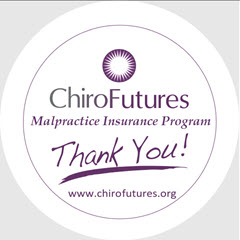RISK MANAGEMENT MINUTE – Navigating Patient Injuries

In the realm of chiropractic care, practitioners often face unique challenges that intertwine clinical responsibilities with broader legal and ethical considerations. A recent situation encountered by Dr. James, a chiropractic professional, exemplifies such a scenario, highlighting the crucial role of effective risk management and the support of a knowledgeable malpractice insurance provider.
The Incident: A Patient's Fall and the Ensuing Dilemma
Dr. James, during her routine practice, was confronted with a delicate situation involving an existing patient. This 65-year-old woman, with a history of bilateral hip and knee replacements, high blood pressure, and cannabis gummy use, reported a minor fall in the parking lot of the office complex where Dr. James' practice is located. Notably, the area where the fall occurred is a common walkway, part of a complex owned by a Homeowners Association (HOA) of which Dr. James is a member.
The patient's fall did not occur on the official property of Dr. James’ office, and she reported no visible obstacles that caused her fall, attributing it instead to uneven bricks. Following the incident, the patient requested contact information to report this incident, presumably to the HOA.
Conflict of Interest and Patient Care
Dr. James faced a multifaceted dilemma: firstly, whether to disclose her membership in the HOA to the patient and secondly, how to manage ongoing care considering the patient’s perceived safety concerns about the property.
Guidance from the ChiroFutures Malpractice Insurance Program clarified several points. Contrary to Dr. James' initial belief, her HOA membership did not constitute a conflict of interest under the Stark Law, which primarily addresses self-referral in situations involving financial gain from diagnostic or lab facilities.
Advising on Assistive Walking Devices
Another concern was whether recommending an assistive walking device might be perceived as downplaying the patient’s complaints. As a healthcare provider, Dr. James has a duty to recommend appropriate measures for patient safety. In this case, advising the use of a walker or cane was appropriate and necessary, given the patient's unstable gait and joint replacements.
Managing Patient Transition and Referral
The final aspect involved Dr. James' consideration to end clinical treatment with this patient. It was essential to differentiate between "dismissing" a patient and concluding treatment with a referral. The latter approach, as discussed with ChiroFutures, involves responsibly transitioning the patient to another provider for further care, such as an orthopedist or physical therapist for gait training. This approach is both ethical and professional, ensuring the patient's continued care and safety.
Lessons Learned and the Role of Malpractice Insurance
This case underscores the importance of having a robust malpractice insurance provider. ChiroFutures Malpractice Insurance Program not only offers protection against claims but also serves as a valuable resource for guidance in complex situations involving patient care and legal concerns.
- Risk Management: It's imperative to understand the various facets of risk in a chiropractic practice, from patient care to property-related liabilities.
- Legal and Ethical Clarity: Having access to expert advice helps in distinguishing between clinical responsibilities and legal obligations.
- Patient Safety First: Recommending safety measures, like assistive devices, should always prioritize patient well-being, regardless of potential legal implications.
- Professional Patient Transition: Ending clinical treatment should be handled with care, ensuring that the patient receives appropriate referrals and continued care.
Conclusion
Dr. James’ experience is a valuable lesson in the complexities of chiropractic practice. It highlights the importance of knowledgeable support in navigating legal, ethical, and clinical challenges. For chiropractic professionals, partnering with a comprehensive malpractice insurance provider like ChiroFutures is not just a safety net; it's a resource for ensuring the highest standards of patient care and professional integrity.

Blogs
- The Chiropractic Cartel: A Look Back at Bias in Accreditation and its Imact on Today's Profession
- Inside Montana's Chiropractic Monopoly: ACA & MCA's Brazen Board Takeover
- Concerns Grow About Control of the NY State Chiropractic Board by the ACA - Use of X-ray in NY Under Threat
- Reproductive Health Information and Chiropractic Care: Navigating New Privacy Regulations
- Navigating Substance Use Disorder (SUD) Consent: What Chiropractors Need to Know













